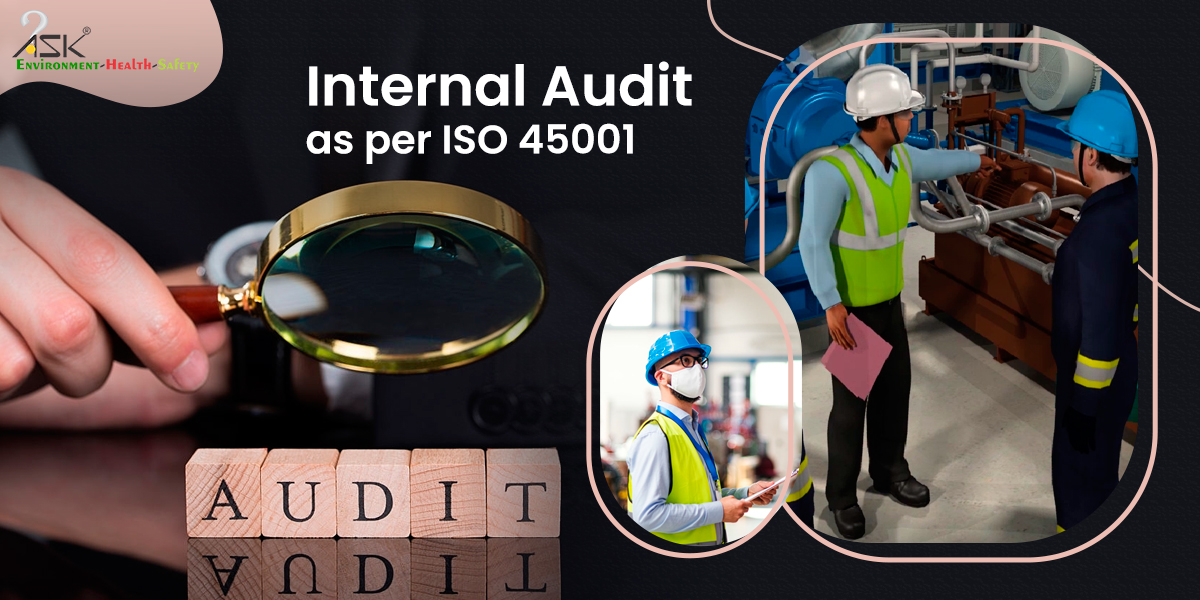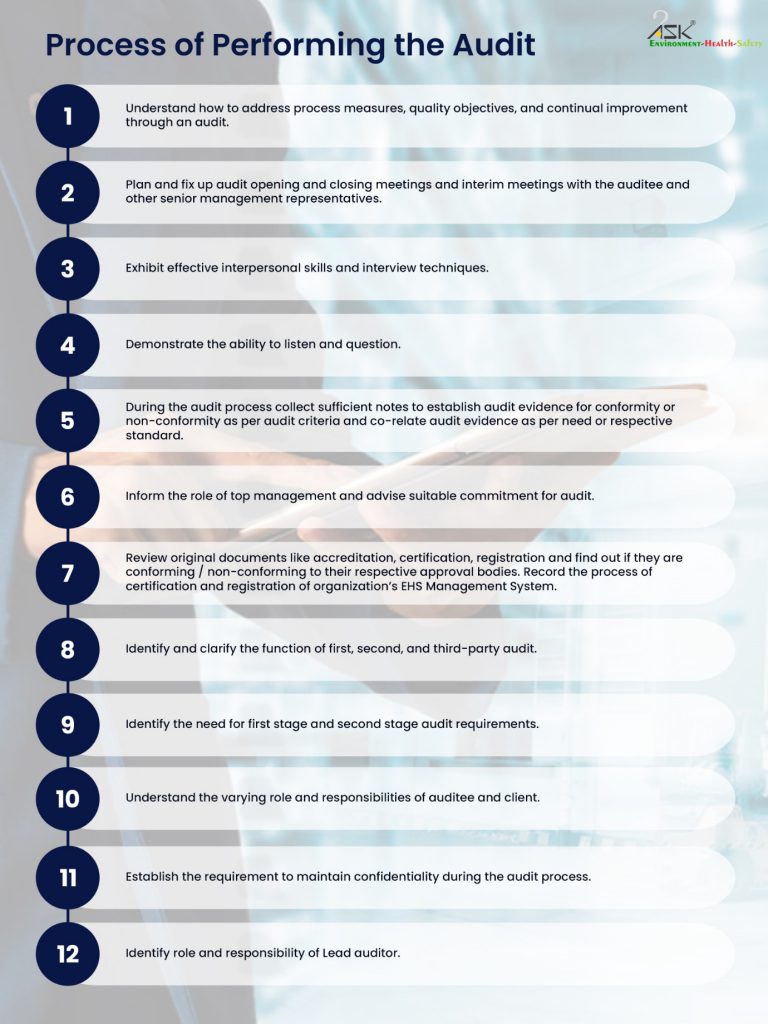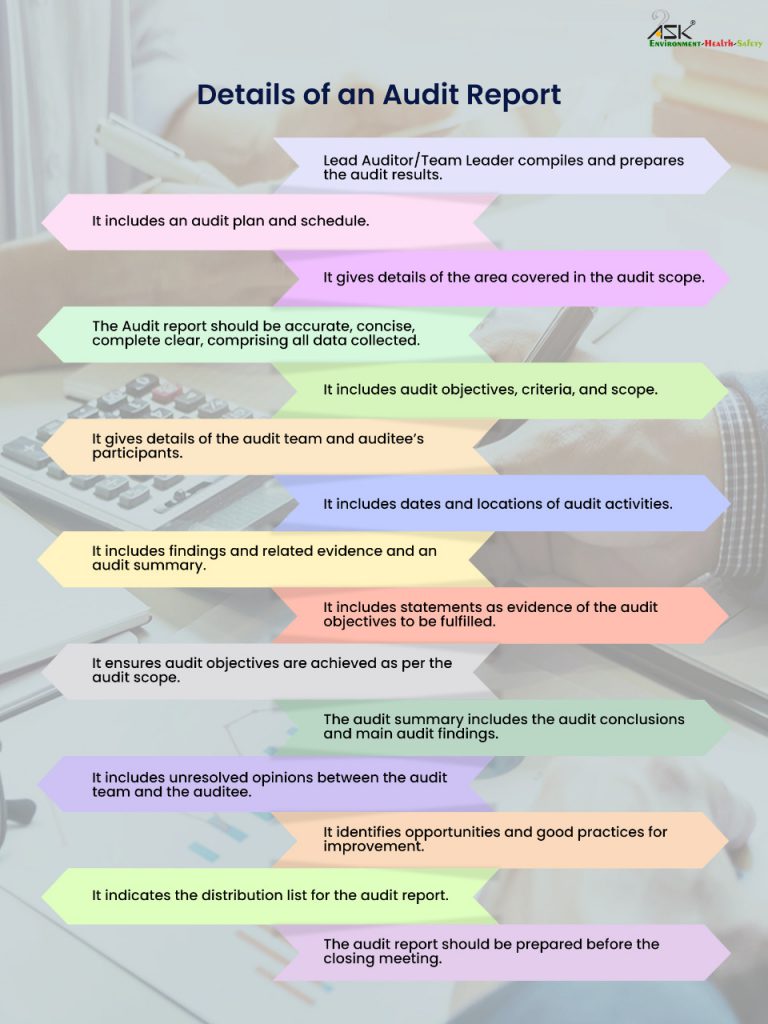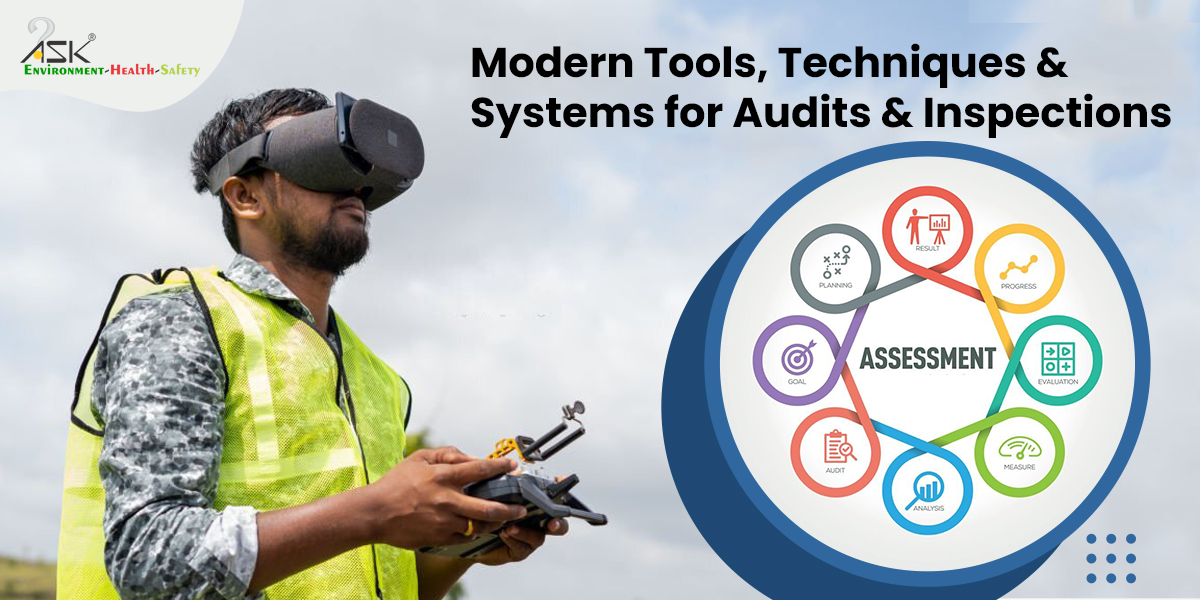Internal Audit as per ISO 45001

An audit is a systematic, independent, and documented process to check objectively if the desired objectives have been met and to determine whether the audit criteria are satisfied. The desired objectives can be met with the audit process for a specific timeline, and it is directed to obtain a specific purpose. During the process of an audit, fulfilment of confirmatory or non-confirmatory facts are documented. In any organization, there are external and internal issues that affect the implementation of effective Safety management. Such issues are also a concern to manpower, organization expectation, and fulfilment of the relevant applicable legal requirement. Audits are conducted to establish responsibilities, authorities, and accountabilities for respective roles to maintain safety standards. The audit ensures communication at all levels within the organization to maintain safety and to be documented for the record. It establishes whether the Safety Management System is in place and conforms to the requirements of ISO 45001.
Process of Performing the Audit
The Internal Audit Process involves the following steps –

What skills must an OHSMS (Occupational Health and Safety Management System) auditor possess?
Along with the necessary qualifications, here are the skills and key competencies of the individual eligible for the position or task of an internal auditor.

Details of an Audit Report
The internal audit report is the document prepared as an outcome of the internal audit process. It contains a clear written expression of significant findings and recommendations based on the review of the policies, processes, risks, controls and transaction processing.

Benefits of ISO 45001 for an organization:
ISO 45001 audit process establishes HSE (Health, Safety, and Environment) Policy.It provides training and resource mechanisms necessary for worker participation to maintain Safety Management.It provides timely, clear, and relevant information regarding Safety Management System.It identifies barriers and obstacles to be removed for workers active participation and minimizes those which cannot be removed.It helps to assign organizational roles, accountabilities, responsibilities, and authorities for the respective area of operation.It helps and ensures fulfilment of legal requirements and statutory regulation/ requirements.
It establishes safety management system objectives and helps to plan how to achieve them.
It provides guidelines for the outsourcing of manpower, contract, and procurement action for the selection of contractors. It identifies a monitoring and evaluation process for measurement of effective Safety Management System. It establishes a process for continual improvement of the issues that affect the safety management system. It helps to ensure that appropriate targets, resources, and controls are in place. It empowers organizations to maintain changes to meet their objectives. It determines the methodology, compliance obligations, and participation of workers. It helps to prioritize control measures for hazard identification to reduce risks and it helps the organization to bring associated risks to a practicable lowest level. It determines the policies and practices to achieve the objectives defined. It facilitates the engagement of appropriate manpower. It identifies evidence of conformity to statutory obligations.
During the process of audit, one can identify improvement opportunities and non-compliance as per management standards by way of inspection and observation.
As per ISO 45001, an audit process establishes consultation and participation of workers at all respective levels and functions to meet the organizational requirement. Worker’s representatives take an active part in the development, implementation, planning and evaluation process to improve the Safety Management System.
Any organization having ISO 45001 certification is subject to continual improvement on the issues that affect OH&S (Occupational Health & Safety).
Internal audits are an ISO 45001 requirement, and they are critical to the success of Occupational Health and Safety Management System(OHSMS). ASK-EHS offers training service with industry experienced trainers & auditors to help guide any organization’s internal auditors on covering all areas of their Occupational Health and Safety Management System (OHSMS).

We also advise our clients on appropriate improvements to their own audit processes. Our reports typically identify the root causes of non-compliance or other deficiencies, prioritize-issues according to the greatest risk and potential for harm to our client, clearly explain the regulatory requirements that are not fully complied with and recommend areas for improvement.Audit findings and recommendations in the audit report are designed to facilitate organization achieve financial, management and regulatory compliance objectives. The internal audit report is presented to the process owners, head of the departments, senior management, audit committee, statutory auditors, and regulatory authorities (if required). Reporting of results needs to be done with a certain level of uniformity and, both the internal auditor and the recipient of the reports should have clarity and agreement about the nature of assurance being provided through these reports.
Get in touch with us to know more.



Fantastic sharing, I appreciate you supplying this kind of knowledge. I have very little knowledge of it.